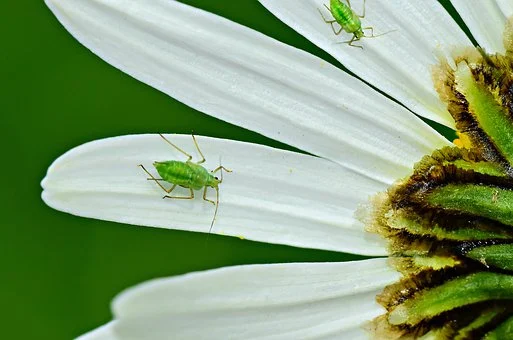
Enjoying your garden can be difficult if pests are causing a significant amount of damage to your plants. These little creatures are detrimental to crops and a nuisance in gardens, so you must be sure to identify the species and see if action is necessary quickly.
You can learn more about identifying types in a pestguide. You need to be aware of the insect so that you know if it's worth trying to eliminate it.
Let's take a look at the five most common in gardens everywhere.
Aphids
Aphids are tiny insects that are usually green, brown, or black, but can appear colorless and even pink sometimes. They have two antennae and two compound eyes. Although most aphids are wingless, some are born with wings.
Aphids can be challenging to get rid of because they reproduce in high numbers. Some can reproduce asexually, and it's even acknowledged that some are born already pregnant. A spray of water, dish soap, and Epsom salt can deter the pests from your precious plants.
Caterpillars
From the larvae of moths and butterflies, caterpillars can quickly take over a garden. If you have a couple, chances are you have tons hidden away somewhere that you can't directly see.
Pests such as caterpillars eat kale, lettuce, and collard greens. While they are beautiful as butterflies, in their crawling state, they can cause chaos in gardens within days. Not only are they devastating to gardens, but quite a few are also poisonous to humans.
Beat the caterpillars by growing your garden early and using a fertilizer.
Leaf Miners
Leaf Miner is a collective term for many insects that lay eggs on the underside of leaves. When the eggs hatch, they burrow into the leaves and live and eat through them. They leave telltale dried tracks up and down the leaves.
Leaf miners can do a steady amount of damage to the leaves, but it's mostly cosmetic. They typically don't eat through the stems. If your garden has a lot of leaf miners, you should consider spraying your plants with neem oil to deter them from laying eggs on the leaves.
Weevils
Weevils are ¾ of an inch long, slate grey or black, and don't fly. They are notorious for damaging cyclamens, azaleas, hemlock, begonias, and many more. These critters are often found indoors as well, enjoying potted plants like ferns.
The plants that weevils consume wilt and often fall as the larvae destroy the root and stem. It's recommended to use diatomaceous earth as a preventative method to control the weevil population without damaging your plants.
Cutworms
These worms are the larvae of night-moths and can cause significant damage. The 2 inch long worms eat the stems of seedlings at ground level and cause the plant to wither away. They are green, yellow, brown, or gray and favor tomatoes, broccoli, kale, and cabbage.
It's recommended to surround your seedlings with toilet paper rolls to deter cutworms from reaching the plants until they mature.
Conclusion
You work hard to maintain a beautiful garden; don't let pests drive you out of it! There are a variety of methods you can use from this article to help control your pest problems. Fertilizers, toilet paper rolls, dish soap, neem oil, and diatomaceous earth are a few ways that can help in your quest for the perfect garden!
© 2025 NatureWorldNews.com All rights reserved. Do not reproduce without permission.





